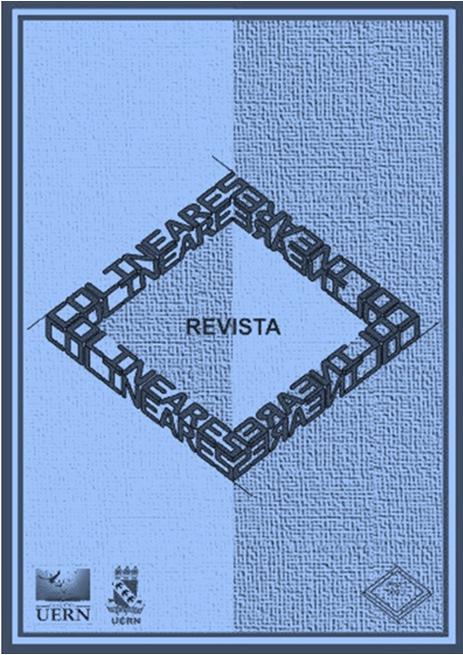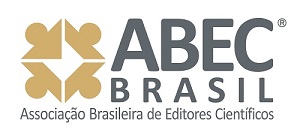BETWEEN REAL AND UNREAL: THE TRACES OF THE FANTASTIC IN THE SHORT STORY "THE ANTS" BY LYGIA FAGUNDES TELLES
Keywords:
Lygia Fagundes Telles, Fantastic, TaleAbstract
This paper focuses on the space as a significant aspect for the establishment of the fantastic atmosphere in the tale "The ants" of the work Mysteries (1998) by Lygia Fagundes Telles. In the analysis of the chosen narrative, we defend the hypothesis that the fictional space and the setting are elements that anticipate traces of the plot to the reader, besides contributing decisively to the configuration of the characters, especially, concerning the irruption of the fantastic. In the story, two students witness the mysterious reconstitution of a dwarf skeleton in a sinister hostel, supposedly implemented by ants, at night. In the construction of the tale, there are thematic and formal procedures that stimulate the fantastic atmosphere, like the remarkable appreciation of the night, the obscure world and a possible return of the dead, such as Ceserani (2006) points out when regarding the fantastic. In this perspective, this study will take into consideration the definitions about the fantastic formulated by the mentioned scholar as guiding references, as well as the propositions of Todorov (1975), Garcia (2007) and Roas (2014). The work of Freud (1919) which postulates about the stranger is also part of our theoretical framework. Regarding the space category, in addition to classical references from Theory of Literature, Bachelard (1989) and Foucault (2009) conceptions are used to understand the arranged game between real and unreal, between symbolic and poetic. Finally, we try to understand Lygia Fagundes Telles"™ fiction focusing on the fantastic, ingeniously expressed on the tale.
Downloads
References
CALVINO, I. Introdução. In: Contos fantásticos do século XIX: o fantástico visionário e o fantástico cotidiano. Trad.: Maurício Santana Dias et al. São Paulo: Companhia das Letras, 2004. p. 3-9.
CESERANI, R. O fantástico. Trad.: de Nilton Cezar Tridapalli. Curitiba: Ed. UFPR, 2006.
CHEVALIER, J.; GHEERBRANT, A. Dicionário de símbolos: mitos, sonhos, costumes, gestos, formas, figuras, cores, números. Trad.: Vera da Costa e Silva et al. 24. ed. Rio de Janeiro: José Olympio, 2009.
CORTÁZAR, J. Valise de Cronopio. Trad.: Davi Arrigucci Jr. e João Alexandre Barbosa. São Paulo: Perspectiva, 1993.
ELIADE, M. O Espaço Sagrado e a sacralização do mundo. In: O Sagrado e o Profano: A essência das religiões. São Paulo: Martins Fontes, 2001, p. 25-61.
FOUCAULT, M. Outros espaços. In: Estética: literatura e pintura, música e cinema. Trad.: Inês Autran Dourado Barbosa. 2. ed. Rio de Janeiro: Forense Universitária, 1984. p. 411 - 422;
FREUD, S. O estranho. In: Edição standard brasileira das obras psicológicas completas de S. Freud. V. XVII. Trad.: Jayme Salomão et al. Rio de Janeiro: Imago, 1996, p. 237-269.
GARCIA, F. O insólito na narrativa ficcional: a questão e os conceitos na teoria dos gêneros literários. In.: _______. (org). A banalização do insólito: questões de gênero literário e mecanismos de construção narrativa. Rio de Janeiro: Dialogarts, 2007, p. 11-22.
LAMAS, B. S. Lygia Fagundes Telles: imaginário e a escritura do duplo. 2002. 296 f. Tese (Doutorado em Letras)–Instituto de Letras, Universidade Federal do Rio Grande do Sul, Porto Alegre, 2002. Disponível em <http://www.lume.ufrgs.br/bitstream/handle/10183/1848/000310382.pdf?sequence=1>. Acesso em: 30 out. 2009.
LINS, O. Espaço romanesco. In: Lima Barreto e o espaço romanesco. São Paulo: Ática, 1976. (Ensaios, 20), p. 66-110.
ROAS, D. A ameaça do fantástico: aproximações teóricas. Trad.: Julían Fuks. São Paulo: Editora Unesp, 2014.
SILVA, V. M. T. A metamorfose nos contos de Lygia Fagundes Telles. 2.ed. Goiânia: Editora da UFG, 2001.
TELLES, L. F. Mistérios. Rio de Janeiro: Rocco, 1998.
TODOROV, T. Introdução à literatura fantástica. Trad.: Maria Clara Correa Castelo. 4 ed. São Paulo: Perspectiva, 2012.
Downloads
Published
How to Cite
Issue
Section
License
Copyright (c) 2016 Antonia Marly Moura da Silva, Monica Valéria Moraes Marinho

This work is licensed under a Creative Commons Attribution-NonCommercial-ShareAlike 4.0 International License.






